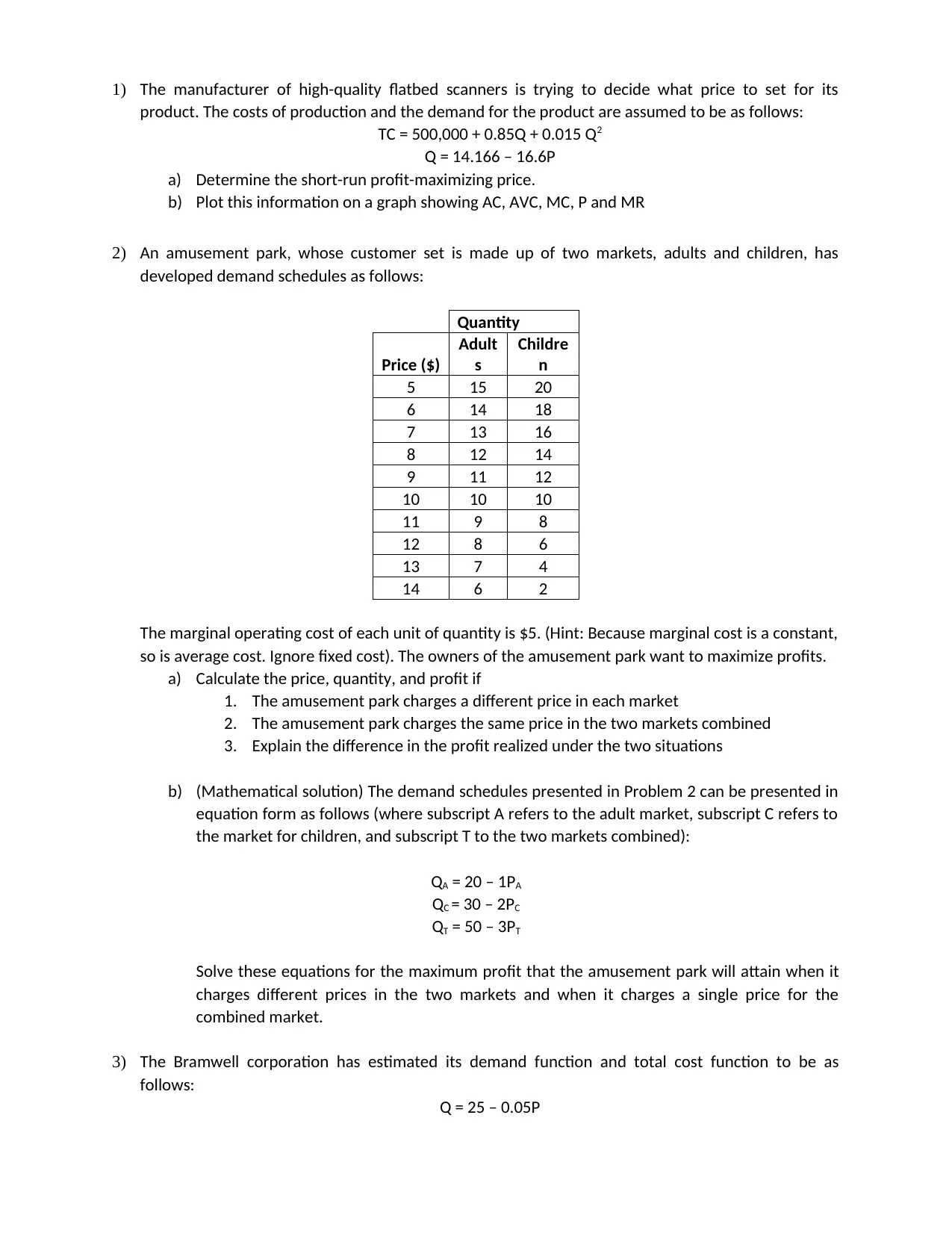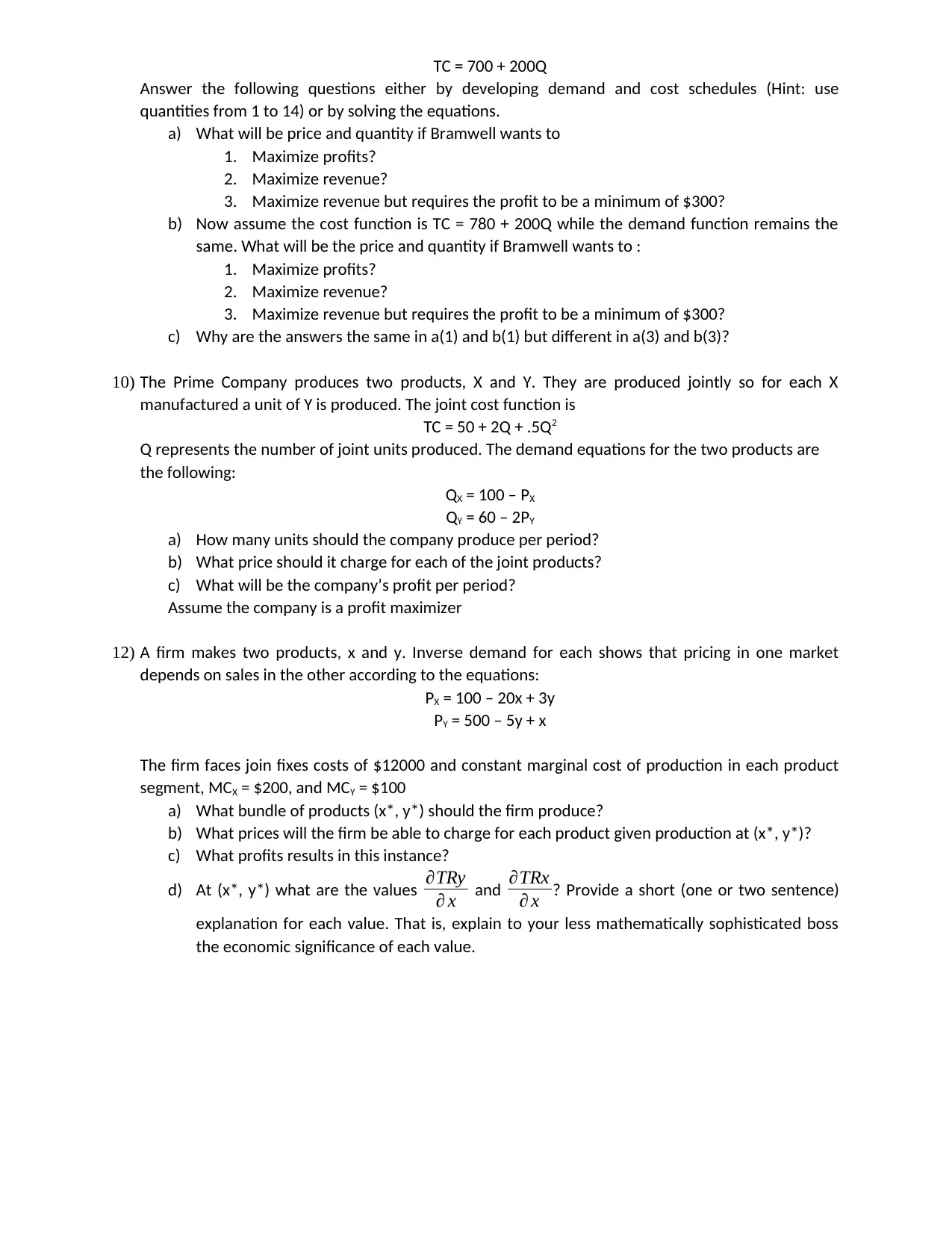Microeconomics Assignment: Pricing, Production, and Demand Analysis
VerifiedAdded on 2019/09/30
|2
|747
|57
Homework Assignment
AI Summary
This microeconomics assignment delves into various pricing and production scenarios. It explores profit maximization under different cost and demand conditions, including scenarios with single and multiple markets, joint products, and interdependent demand. The assignment requires calculating optimal prices, quantities, and profits, analyzing the impact of different pricing strategies, and understanding the relationship between cost functions, demand curves, and revenue maximization. It covers topics such as marginal cost, average cost, and the application of economic principles to real-world business decisions, providing a comprehensive understanding of microeconomic concepts and their practical applications. The assignment includes mathematical solutions and graphical representations to illustrate key concepts.
1 out of 2








![[object Object]](/_next/static/media/star-bottom.7253800d.svg)